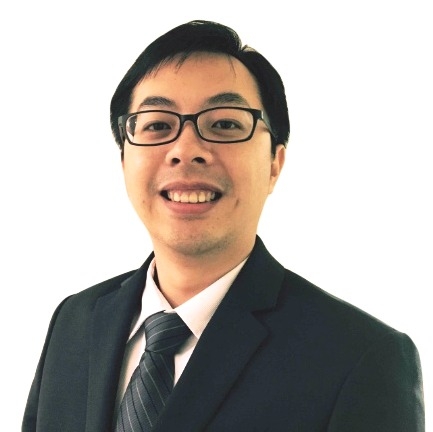
- This event has passed.
MAE PhD Defense – Che-Yuan Chang
October 26, 2017 @ 10:00 am - 12:00 pm
TITLE: Chirp Signal for Wave Dispersion Relationships and Nonlinear Ultrasonic Damage Imaging
ADVISOR: Dr. Fuh-Gwo Yuan
DATE & TIME: Thursday, October 26, 2017 at 10 AM
LOCATION: EB3 – 3235
ABSTRACT:
The aim of this research is to investigate the feasibility of utilizing chirp signal for examining wave dispersion relationships and ultrasonic damage imaging based on linear and nonlinear phenomenon upon isotropic and carbon fiber reinforced polymer (CFRP) plates with a system of piezoelectric transducer (PZT) and laser Doppler vibrometer (LDV). Accurate determination of the dispersion curves is a perquisite to optimize the wave mode selection in ultrasonic wave-based nondestructive inspection technology. If exact material properties are not known in priori, elastic equations are only ideal models.
Guided wave dispersion curves in isotropic and anisotropic materials can be extracted experimentally by matrix pencil (MP) method. A transducer emits a broadband excitation, linear chirp signal to generate guided waves in the plate. The propagating waves are measured at discrete locations along the lines for LDV. The measurements are first Fourier transformed into either wavenumber-time k-t domain or space-frequency x-ω domain. The matrix pencil method is then employed to extract the dispersion curves in different wave modes simultaneously. In this research, the inspections for dispersion relations on aluminum plates with different thickness are demonstrated and compared by two-dimensional Fourier transform (2-D FFT). Another experiment on composite plate is analyzed by MP method. The results are confirmed by three-dimensional (3-D) theoretical curves computed numerically. It explains that the MP method not only shows more accuracy for distinguishing the dispersion curves on isotropic material, but also gets on anisotropic and laminated materials.
Another approach is presented for determining a dispersion curve of a thin plate continuously by using chirplet transform (CT). Time-frequency representations are widely used to characterize dispersive waves. Wavelet transform (WT) as one of them has been employed to narrowband excitation signals for mapping a single point on the dispersion curve under each excitation. For linear chirp signals, although the response to the linear medium can be considered as a linear superposition of the excitation narrowband signals, the WT cannot apply to analyze each response signal as narrowband signals and then superimposed. In this research, the peak of the magnitude of the CT in time-frequency domain is related to the time of arrival time of the group velocity. Experiments are performed by a PZT and LDV at two locations on a thin plate and results are shown on an aluminum plate and a composite laminate. The study demonstrates that the dispersion curve can be effectively deduced by only one excitation with a broadband chirp signal for each plate.
The other aim of purpose is to examine vibration patterns and for imaging delamination using zero-lag cross-correlation (ZLCC) imaging condition on a carbon fiber reinforced polymer (CFRP) plate with a barely visible impact damage (BVID). Based on linear and nonlinear behaviors at local defect resonance (LDR) frequency, images of damage and delamination are enhanced. LDR as resonant ultrasound spectroscopy of defects opens up an opportunity to detect and visualize damages in material. A linear chirp provides a linear relation of frequency and a wideband signal for excitation, which enables analyzing vibration patterns and wave propagating as sinusoidal waves in multiple frequencies. A simple case of an aluminum plate with a flat bottom hole (FBH) is investigated first in experiment and later a CFRP plate with a BVID is examined. LDR on a laminated CFRP plate with defects not only shows linear behavior but also induces nonlinearity due to nonlinear mechanism in the material. The experimental investigation shows good agreements from the ZLCC imaging condition and LDR methods, demonstrating a strong capability of using chirp signal excitation as guided waves in approaching location and geometry of BVID in thin composite structures.
BIOGRAPHY:
Che-Yuan attended the National Taiwan University and graduated in 2006 with a BS in mechanical engineering. Following, he decided to keep pursuing his graduate level research at NTU and obtained his Master of Science in Manufacturing Group of Mechanical Engineering near the middle of 2008. After graduation, he started to work in industry as a Research and Mechanical Design Engineer for hinges design of laptops and PC about 3 years. In August 2012, Che-Yuan joined the research group of Dr. Fuh-Gwo Yuan and began his Ph.D. study in Raleigh, NC. One year later, he moved to Hampton, Virginia where he and his labmate initiated a new lab for Integrated Structure Health Management Laboratory in National Institute of Aerospace. His research interests include nondestructive inspection, structure health monitoring, signal processing, dispersion curves and wave propagation on isotropic and complex materials. More specifically, he is applying wideband signal for signal processing to examine the feasibility for dispersion relationships and nonlinear phenomena on complex structures with nondestructive inspection methods. He is also trying to obtain the ultrasonic imaging of barely visible impact damage through measured data from noncontact sensing system.
